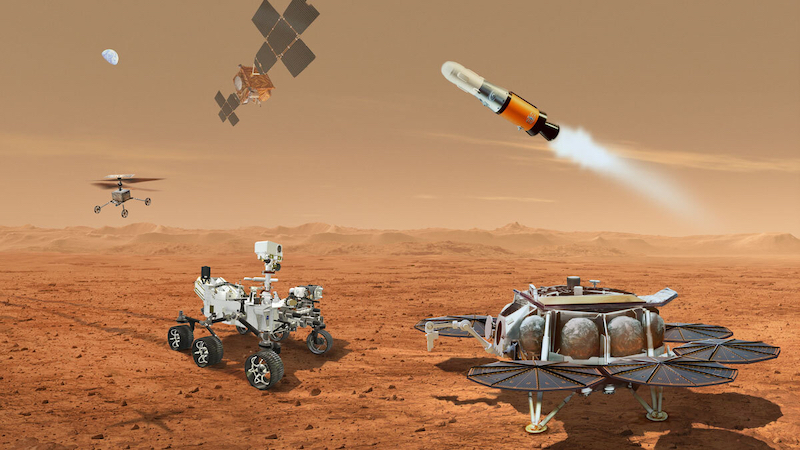
NASA said on July 27, 2022, that it had completed the systems requirements review for the Mars Sample Return mission. According to NASA, it’ll be the most complex Mars mission ever undertaken. The European Space Agency (ESA) is a mission partner. NASA and ESA are targeting 2033 to bring the first-ever samples of Martian rock and soil back to Earth. The mission will enable scientists to study Mars samples directly in laboratories on Earth for the first time.
The Mars Perseverance rover – which landed in in Mars’ Jezero Crater in early 2021 – was the first leg of this international interplanetary mission. Perseverance has already collected and cached samples on Mars.
The systems requirements review is a technical review meant to ensure that developers of the Mars Sample Return mission understand exactly what’s wanted and needed for the mission and are ready to proceed with an initial system design.
And, until now, the return aspect of the mission has been in the conceptual design phase. Now, that process is nearing the end, and the overall mission is getting some changes, including two new Mars helicopters. A demonstration of the Mars helicopters technology – a small robotic coaxial rotor helicopter called Ingenuity, nicknamed Ginny – is operating on Mars now along with the Perseverance rover.
Changes for Mars Sample Return
The mission plan has already come a long way since it first started. And, as might be expected, some changes have been made along the way. Those changes are due largely to the success of the Perseverance rover and also for its companion, the Mars Helicopter. As Thomas Zurbuchen, associate administrator for science at NASA Headquarters in Washington, explained:
The conceptual design phase is when every facet of a mission plan gets put under a microscope. There are some significant and advantageous changes to the plan, which can be directly attributed to Perseverance’s recent successes at Jezero and the amazing performance of our Mars helicopter.
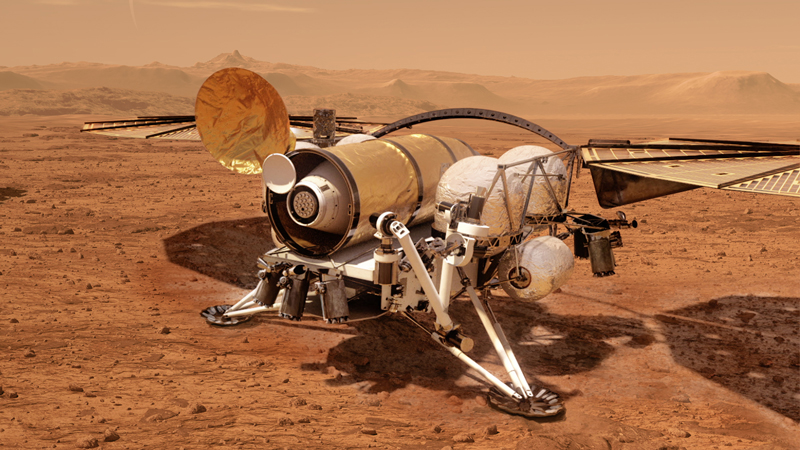
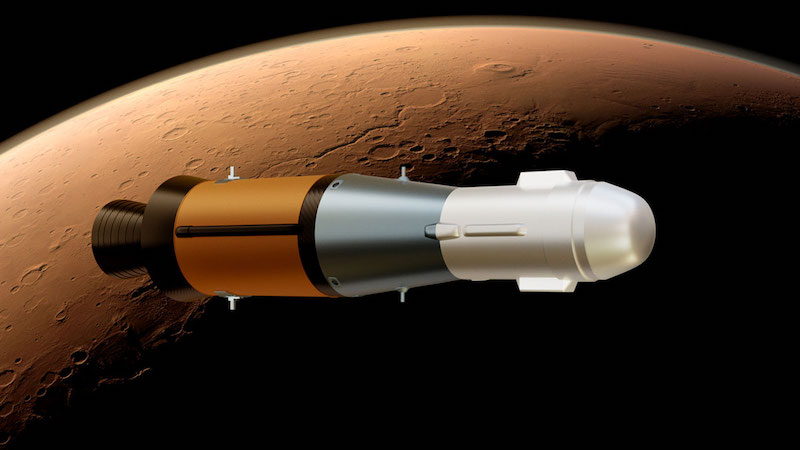
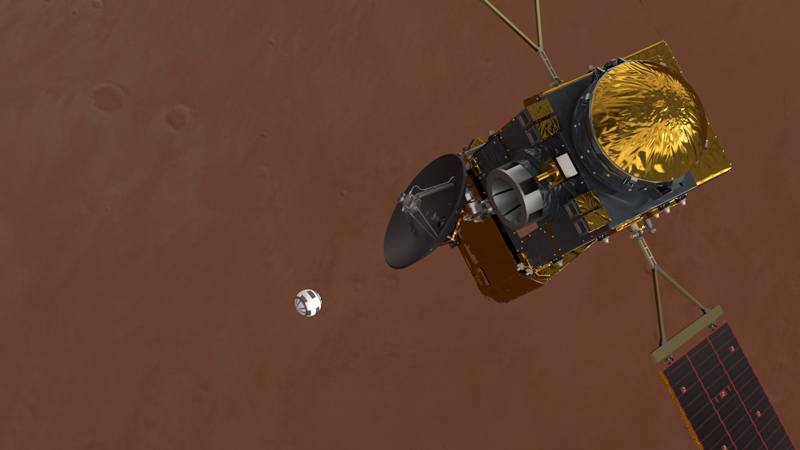
2 new Mars helicopters
In the Mars Sample Return, Perseverance will be the main vehicle to deliver the samples to the Sample Retrieval Lander. The lander carries the Mars Ascent Vehicle and Sample Transfer Arm. There will also be not one, but two new Mars helicopters, similar to Ingenuity. They will be also be available as a backup method of delivering the samples.
Previously, the mission included a Sample Fetch Rover and a second lander. But now, Perseverance will be able to deliver its samples directly to the Sample Retrieval Lander, with help from the helicopters if needed.
Preliminary design phase
Next, the mission development will move into the preliminary design phase this October. This is a critical phase, where NASA will complete the needed technology development and create engineering prototypes of the primary mission components. This phase is expected to last 12 months.
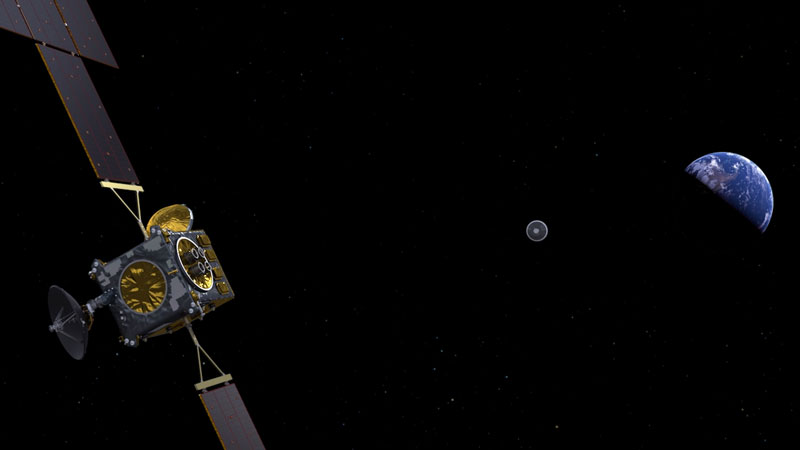

ESA involvement
ESA will remain fully involved in the mission. Despite the other changes on the NASA side, both the Earth Return Orbiter and Capture, Containment, and Return System will still be key components of the mission architecture. Last May, ESA presented the updated mission concept to the delegates from 22 states of Europe’s space exploration program, Terrae Novae. It is possible, however, that ESA’s Sample Fetch Rover will also be discontinued. ESA will make that decision at the next meeting of Terrae Novae in September. According to David Parker, ESA director of Human and Robotic Exploration:
ESA is continuing at full speed the development of both the Earth Return Orbiter that will make the historic round-trip from Earth to Mars and back again; and the Sample Transfer Arm that will robotically place the sample tubes aboard the Orbiting Sample Container before its launch from the surface of the Red Planet.
While the architecture for Mars Sample Return is coming together nicely, it is still dependent on future funding. More formalized agreements are expected within the next year. The NASA/ESA partnership is a great example of how different countries can work together on a common goal. As Zurbuchen noted:
Working together on historic endeavors like Mars Sample Return not only provides invaluable data about our place in the universe but brings us closer together right here on Earth.
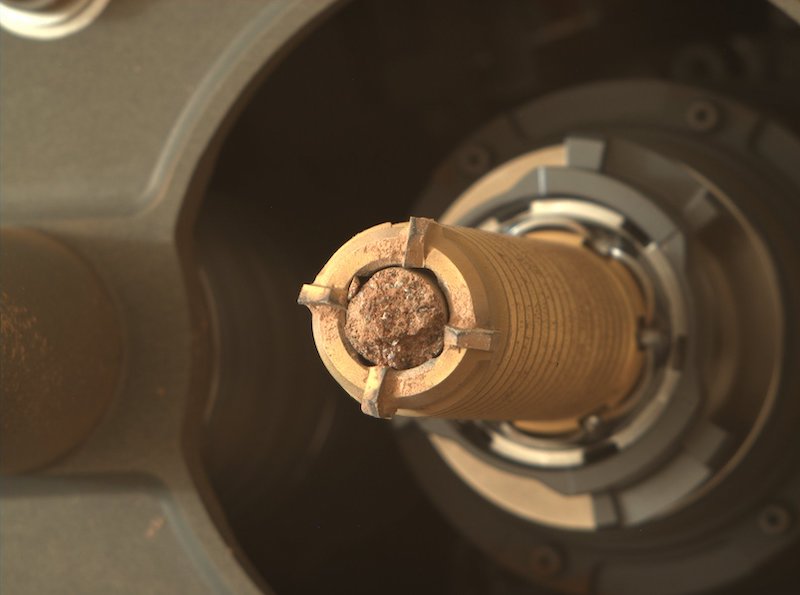
Mars Sample Return: Searching for evidence of life
Mars Sample Return is, needless to say, an ambitious plan. If successful, it will be the first time that samples of Martian rocks and soil have been brought directly back to Earth for analysis. Scientists have studied multiple Martian meteorites that provide valuable clues about the planet’s past. But the samples from Jezero Crater are unique. They can, hopefully, answer the question of whether life ever existed on Mars. They come from the ancient river delta and surrounding terrain. On Earth, such locations are ideal for preserving microbial fossils. Is the same true for Mars?
As of this writing, Perseverance has collected 12 rock samples that are being stored in tubes onboard the rover. It will continue to collect more, in particular ones from the ancient river delta. Scientists can analyze the samples in state-of-the-art labs with equipment that would be too large to take to Mars. Perseverance does, however, have its own lab onboard where preliminary analysis is done.
Call them the “dusty dozen.” I’ve now got 12 rock core samples on board, collected while #SamplingMars at these different sites around Jezero Crater. Learn more about all my samples, and keep track of the ones still to come: https://t.co/SuSfqejyOZ pic.twitter.com/5VoaJjj3Xh
— NASA's Perseverance Mars Rover (@NASAPersevere) August 5, 2022
Perseverance has found evidence that Jezero Crater did, indeed, once contain a lake and that conditions were habitable, by earthly standards, a few billion years ago. The rover has also found various organic carbon compounds in rocks. It is not yet known, however, if any of the carbon is of biological origin. That is where labs back on Earth come in!
Read more about the Mars Sample Return mission
Bottom line: The Mars Sample Return mission is changing a bit, including the addition of 2 new Mars helicopters. It will bring the 1st-ever Mars samples of rock and soil to Earth in 2033. Scientists will analyze the samples for evidence of past life on the red planet.
The post Mars Sample Return mission takes another step first appeared on EarthSky.
0 Commentaires